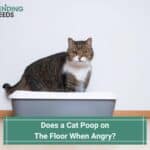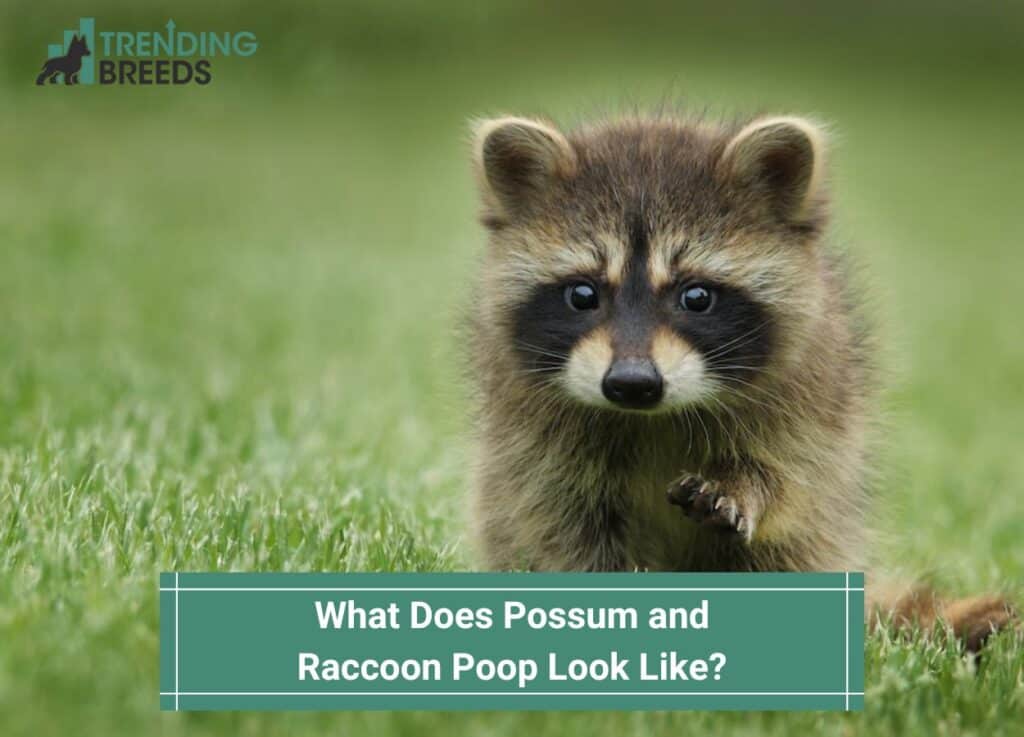
Possums and raccoons are notorious for producing large amounts of waste excretion. Possums can quickly transform your basement or attic into their latrine if left undisturbed. What does possum and raccoon poop look like?
Their foul-smelling excrement also has the potential to contain a variety of germs that can cause sickness. Excretion serves as a reliable indicator of their presence.
Possum excrement is big, cylinder-shaped, and measures approximately 3/4-inch in size. Undigested food is commonly present in them.
Raccoon poop, on the other hand, is cylindrical in shape, dark, and around 2-3 inches long.
Keep on reading below for more information.
Before you scroll further down this guide, check out these other related articles: Dog Waking You Up at Night To Poop? and Why Does Dog Poop Turn White?.
Table of Contents
What Does Possum Poop Look Like?

Possums are nocturnal animals that are free to move about and poop anywhere they like. Possum excrement resembles dog poop in appearance, scent, and color.
This implies that it could be challenging to recognize possum poop if you have pets in your home.
This is why it is advised to be cautious when removing your pet’s waste from your yard. The likelihood is that it could be possum waste.
Poop from possums typically has smooth sides and a diameter of about 3/4 of an inch. It won’t be feasible to distinguish the poop by color because these fuzzy animals are omnivorous scavengers.
Nonetheless, possum excrement is typically described as being brown or blackish. Like other widely seen pests, possums are opportunistic feeders, so using a stick to inspect the waste for berries won’t help. Possum droppings are easily recognized since they are typically seen in stacks that resemble trains.
In addition to these characteristics, the excrement of a possum is not one continuous mass but rather is fragmented in the middle.
In conclusion, possum poop might be identified by its discontinuous nature and frequent appearance in mounds of a brown or blackish color.
The answer also depends on the type of possum and what it is that it is currently eating. Brushtail possums are the most prevalent of all scat.
Brushtail Possum
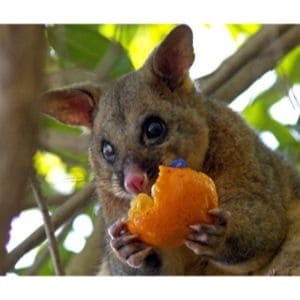
Koala excrement and brushtail possum droppings are nearly identical but differ in size. The scat of a brushtail possum is just around 15 millimeters (0.6 inches) smaller.
The color of the excrement varies based on what the possum is consuming, from greenish-brown to dark brown to black.
The brushtail possum’s waste is cylindrical and comes in different sizes.
Brushtail possums deposit their stools in a neat stack of one to two meters, and their feces appear as separate pellets, clumps, or strings. The scat will stick out of the break and have a stringy look and rough texture.
Ringtail Possum
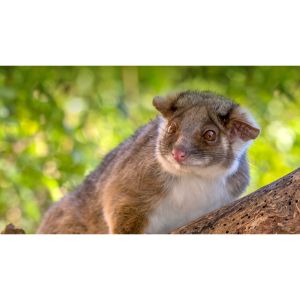
The excrement of ringtail possums is around 10 mm longer than that of brushtail possums. The simplest way to describe it would be as an irregular pellet that looks like an olive pit and ranges from dark brown to black.
The pellets frequently appear in groups ranging from three to six, have a granular surface, and have curved ends.
Also, when feeding trees are present, their waste is typically scattered beneath them, making it easy to locate if the tree is over an open area.
The typical ringtail possum also consumes its fecal pellets, which it double digests to extract more nutrients from the waste.
What Does Raccoon Poop Look Like?
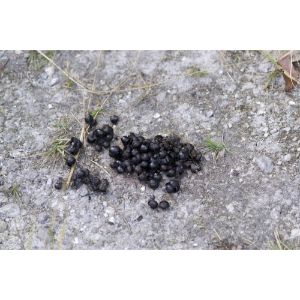
Typically, raccoon excrement is dark, tubular, and two to three inches long.
To distinguish between dog and raccoon excrement, search for uneaten food. Undigested berry fragments can frequently be observed in raccoon feces.
Raccoons create “community latrines,” frequently urinating on top of previously excreted material in a single location.
Also, because raccoons are social creatures who prefer to live in small groups for protection, the latrines are frequently large and easy to locate.
Are Possum or Raccoon Poop Dangerous?
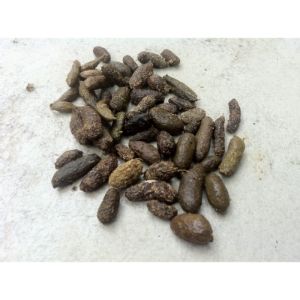
Possum or raccoon excrement is extremely harmful since it contains many disease-causing bacteria and viruses.
It has been shown that their feces contain dangerous germs that can end up causing leptospirosis and salmonella.
It has been determined that personal contact with their poop can spread all of these illnesses.
The disease brought on by the Buruli bacteria, frequently found in possums and raccoons, is the most hazardous of all illnesses. Humans can develop skin ulcers from the skin-eating Buruli bacteria.
Possums have been observed to poop in swimming pools and other bodies of water.
It is always recommended to keep them closed and to check them frequently to ensure that the water is not tainted by their feces if you live in an infested area.
In addition to all of these risks, possum poop also carries a significant risk from the fungal spores found in it. Once inhaled, these fungus spores can seriously harm your heart and lungs and ultimately infect your blood.
In light of this, cleaning up their excrement from your surroundings is crucial, but it’s also crucial to do it carefully and correctly.
Can Possums or Raccoons Spread Illness to Humans?
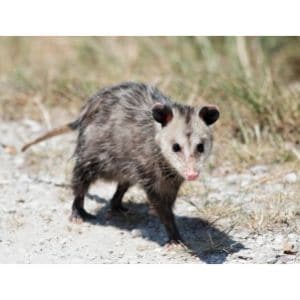
Possums and raccoons can transmit diseases to people. Most of these illnesses can become fatal if not promptly addressed.
It’s crucial to remember that they can only transmit these diseases to humans through direct contact.
Possums and raccoons tend to be submissive creatures, so the likelihood of them attacking people is low.
This indicates that the only way to come into direct contact with a possum is by directly touching the feces with an open wound or taking food or water that has been soiled by the feces of a possum/raccoon.
One of these bacterial infections that can affect humans is called leptospirosis, and the leptospira bacteria cause it. This bacterium is found in very high concentrations in the feces and urine of possums/raccoons.
People can contract the zoonotic disease known as leptospirosis if they have an open wound or cut in their skin and come into close contact with the feces or urine of a possum/raccoon.
Leptospirosis is a rare illness that, if neglected, can lead to respiratory issues, meningitis, liver failure, and kidney damage.
The Buruli ulcer is a serious condition that is mostly brought on by bacteria found in these animals’ feces.
The Buruli ulcer is brought on by the bacteria known as Mycobacterium ulcerans, which can be found in high concentrations in the feces of possums and raccoons.
Buruli ulcers are caught through direct contact with their feces, much like leptospirosis.
A skin-eating bacteria called Mycobacterium ulcerans causes painless lumps on the arms and legs.
These lumps will ultimately grow into large ulcers. The Buruli ulcer can result in lasting physical deformities if not recognized and treated in its early stages.
Possum and raccoon excrement have been linked to numerous illnesses.
Animals are susceptible to these illnesses just like people are. While letting pets out of the house, you must exercise caution, especially if you are in a possum-infested area!
Tips for Safe Poop Removal from Your Yard or Attic
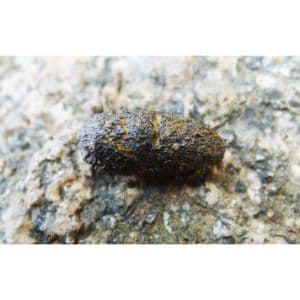
Removing any possum or other invasive pet waste as soon as possible if you have found it, particularly if you live with children and other pets, is recommended.
We’ll look at safe ways to remove possum waste from your property now that you know how hazardous their droppings can be.
The method of cleaning must be adapted according to the location of the droppings and the number of droppings present.
Let’s look at a few methods for removing droppings from their nesting locations in your attic, cellar, or any other location where there is a buildup of droppings.
Put on a pair of disposable gloves, a rubber boot covered in a disposable cover, and a surgical mask to protect yourself from inhaling the suspended particles left over from the feces that have dried up.
If the pile of feces has become dry, spraying it with water will help ensure that the dried-up particles do not get airborne or linger in the air after the pile is disturbed.
Safely transfer the excrement onto a container using a shovel. It is not recommended to dig a pit and dump the waste inside of it.
The safest method is to ignite the excrement with gasoline. It will not contaminate the land or the water by being set on fire.
Boiling water and disinfectant should be used to clean and disinfect the area, whether inside, in the attic, or in the basement.
The glove should be disposed of appropriately, along with the shovel and rubber boot.
Also, put on a glove and a mask and torch any possum waste you discover in your backyard or garden.
After extinguishing the fire, spray some disinfectant around that region. Similar steps should be taken if the feces are in your swimming pool: fully drain the water, then sanitize the area.
Frequently Asked Questions
What does skunk feces look like?
Skunk droppings look like cat poo. They are about two-three inches long and tubular in shape.
What do coyote feces look like?
Coyote feces are typically full of hair and bones. While it looks a little like dog poop, it is ropey in texture.
Will a porch light keep raccoons away?
While a bright porch light will occasionally scare away raccoons, this may not be enough. Check and ensure that your trash is not open, and that you don’t have food scattered about near your home.
What Does Possum and Raccoon Poop Look Like?
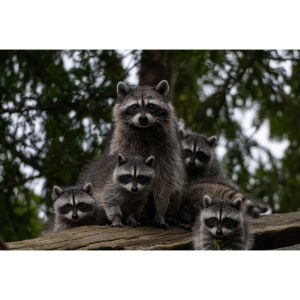
It’s possible to tell the difference between possum and raccoon droppings by looking for certain characteristics.
You must be familiar with these signs to quickly identify a species invasion in your lawn. Doing this can solve the issue before it becomes out of control.
If you find this guide, “What Does Possum and Raccoon Poop Look Like,” informative and helpful, you can check out these other related articles from our team:
- Parvo Poop Smell, Color, Appearance, Diarrhea & Stages
- Why Do Puppies Eat Their Poop
- What To Do With Dog Poop Until Garbage Day
You can learn more about this topic by watching “How to Identify Raccoon Poop / Droppings!” down below:

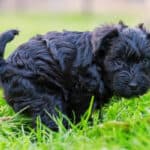
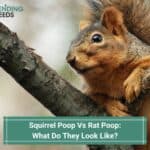
![Why Does Dog Poop Turn White? [9 Possible Causes] (2024) Dog poop that appears white while frozen on snowy ground.](https://www.trendingbreeds.com/wp-content/uploads/2021/12/Frozen-dog-poop-150x150.jpg)
